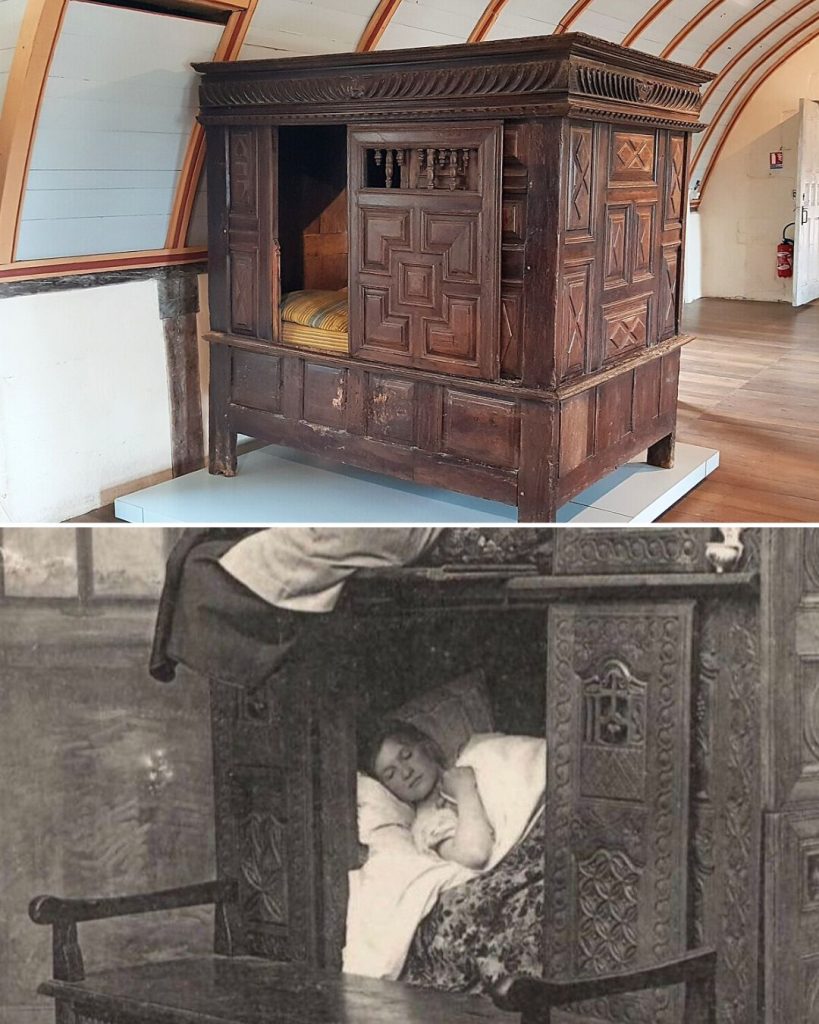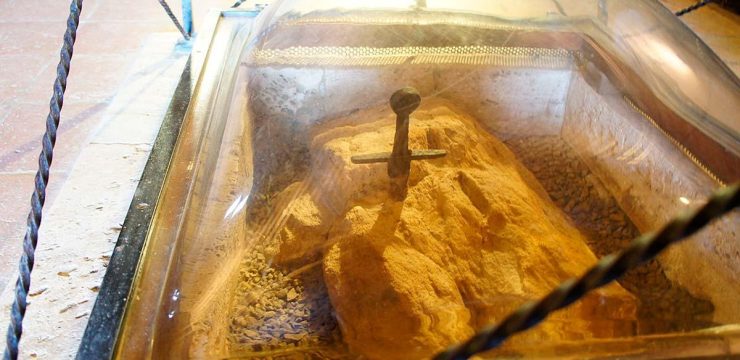In the harsh winters of medieval Europe, where limited space and freezing temperatures posed daily challenges, an ingenious solution emerged that would forever alter how people found rest: the box bed. These enclosed wooden sleeping structures weren’t just beds—they were lifelines, offering warmth, privacy, and a sense of safety. The story of the box bed is one of human resilience, clever design, and the timeless pursuit of comfort in even the most unforgiving environments.

Life in medieval Europe was defined by discomfort. Homes were built with stone walls and dirt or poorly insulated wooden floors, making them drafty and cold throughout much of the year. Open hearths offered some heat, but much of it escaped through unsealed roofs or chimneys. In this setting, the box bed emerged not as a luxury, but as a necessity. Crafted from solid wood and designed like a large cupboard or wardrobe, box beds provided a much-needed refuge from the bitter chill. Enclosed on all sides with wooden panels, sliding doors, or heavy curtains, these beds acted as insulators, trapping body heat and keeping out cold drafts. Raised on short legs, they also protected sleepers from dampness and pests that were common on the floor.
What truly set the box bed apart, however, was its thoughtful engineering. Though built centuries ago, these beds demonstrated a surprisingly modern understanding of warmth, space, and even air circulation. Small holes or cutouts were often incorporated to ensure ventilation, preventing the buildup of stale air inside the enclosure. This balance of warmth and breathability made the box bed not only practical but surprisingly comfortable.
Craftsmanship varied widely depending on the economic status of the household. In wealthier homes, box beds often featured ornate carvings, decorative molding, and even family crests etched into the wood. These elaborate designs reflected both status and aesthetic values of the time. In contrast, the working class relied on simpler versions—sturdy, functional, and typically made of pine or other affordable local woods. Regardless of style, the function remained consistent: warmth, protection, and personal space.
Privacy was a rare commodity in medieval homes. Families typically lived in single-room dwellings where sleeping, cooking, and daily activities all took place in a shared space. In this context, the box bed offered an invaluable sense of seclusion. By pulling shut a curtain or sliding a door, an individual could escape the watchful eyes of others—even if only briefly. For children and guests, some box beds were built in double layers, like bunk beds, making the most of limited square footage. These double-decker setups revealed a creative approach to space management that was far ahead of its time.
One of the most curious and often misunderstood aspects of box bed culture was the preference for sleeping in a semi-upright position. Rather than lying flat, many medieval people chose to sleep propped up, supported by cushions or angled boards. This wasn’t a matter of comfort alone—it was deeply rooted in belief systems of the era. Upright sleeping was thought to aid digestion and reduce the risk of illness. More significantly, lying completely flat was associated with death and burial, creating an unconscious aversion to the position. As a result, many people preferred to rest at an incline, even if it wasn’t the most physically restful posture by modern standards.
As centuries passed, the box bed slowly began to vanish. The rise of the Renaissance and the Industrial Revolution introduced new architectural styles and heating methods, rendering the need for enclosed beds less critical. Central heating and improved home insulation meant that the open bed could once again take center stage. But even as box beds fell out of favor in most of Europe, they endured in certain regions. In Brittany, France, and parts of rural Scotland, enclosed beds remained common well into the 19th and even 20th centuries, valued for their coziness and tradition.
Today, the legacy of the box bed continues to captivate the imagination. Historians admire them for their ingenuity and cultural significance. Designers look to them for inspiration, seeing in their compact structure a solution to modern issues of space-saving furniture. Some contemporary craftsmen are even reviving the concept, building box beds with modern materials for small apartments or children’s rooms. These updated versions offer the same blend of privacy, warmth, and charm that made the originals so beloved.
In some heritage sites and museums, visitors can step into reconstructed medieval homes and climb into replicas of box beds to experience what it was like to sleep in one. These interactive experiences bridge the centuries, helping modern people better understand the ingenuity and daily lives of our ancestors. It’s a powerful reminder that while technology evolves, the human desire for warmth, security, and personal space remains unchanged.
The story of the medieval box bed isn’t just about an unusual piece of furniture—it’s about human creativity in the face of adversity. It reflects how necessity drives innovation, and how even the simplest materials—wood, nails, and a bit of clever thinking—can result in enduring solutions that echo across generations.
As we reflect on these wooden cocoons of the past, we’re reminded that some of the most remarkable inventions in history arose not from luxury or abundance, but from struggle and survival. The box bed stands as a testament to the resilience and resourcefulness of the people who built and used them—ordinary individuals who crafted extraordinary comfort in the coldest of times.





